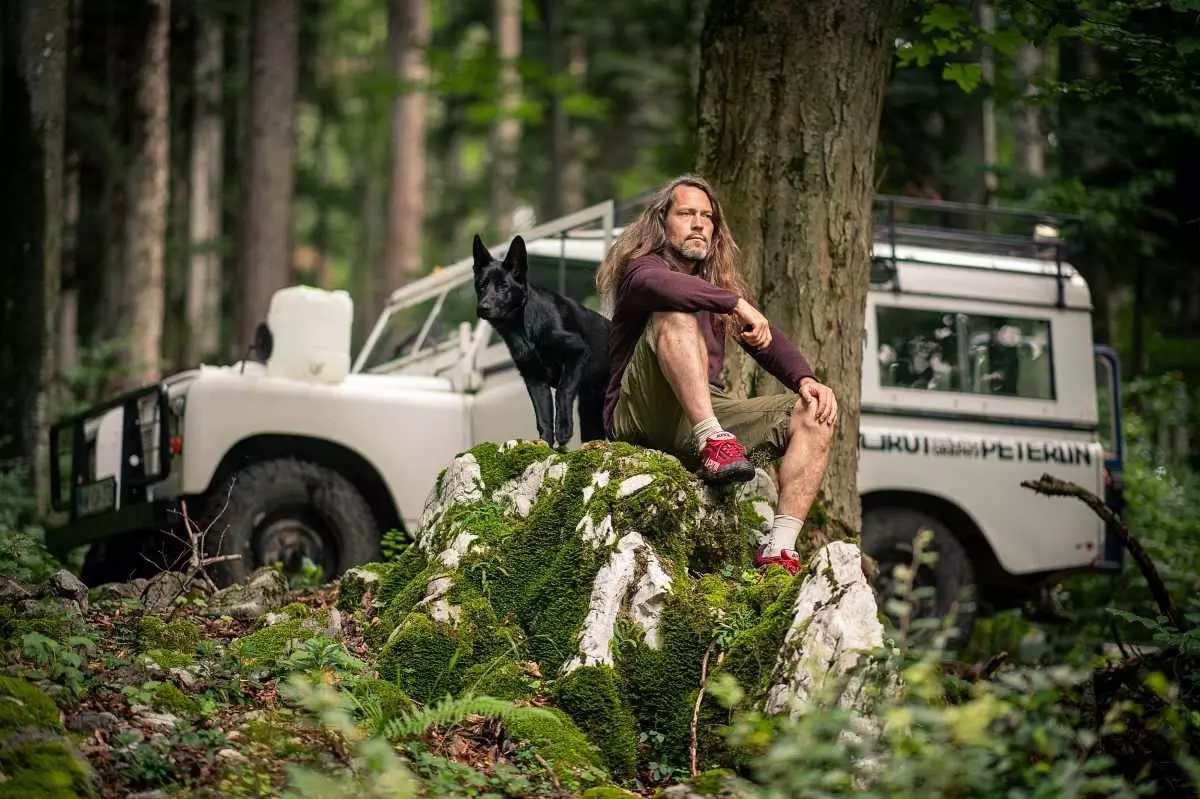Borut Peterlin is a fine art photographer who lives in Straza, a city of 2,000 inhabitants in the southeast of Slovenia. Specialized in collodion Photography, a 1850s Analog Art Form, his work has been exhibited in galleries and museums around the world. From his city, he encourages them to get to know and immerse themselves in Slovenia's greatest asset: its nature.
This interview is part of "The World Made Local", a global project of Condé Nast Traveler in the seven international editions, which gives voice to 100 people in 100 countries to discover why their own territory should be your next destination.
How would you describe Straža?
What makes my city special is that it is not absolutely. There are no big tourist attractions, although we have the largest area of virgin forest in Europe. I have taken some of my guests into the woods: some took out a sketchbook, some meditated, and some hugged the trees. Two hours passed as if nothing had happened. Besides, to me I love to cook in nature and include anything edible we find, we usually pick up mushrooms, wild garlic, fir buds... Also oak bark Y walnut leaves because with them we prepare a soup that will later tone the impressions that we make during our photography workshops.

Photographer Borut Peterlin.
Tell us about your connection to Slovenia.
It's the best place to live and raise my kids, but the worst place in the world if you want to make a living from art. I studied photography in Prague, London, Rochester and Spain, and worked in Italy with Oliver Toscani. I feel the need to connect with the international photographic community, but I also have this reality. For this reason, I have launched myself on social networks. and I'm posting numerous vlogging on YouTube, with nature as the main story.
If someone has only 24 hours in Slovenia. What would you recommend?
I would advise you to see the main tourist attractions, such as the incredible lake Bled, the postojna cave and the soca river in the capital of Ljubljana. But if you wanted to connect with nature, that schedule doesn't make sense. Depending on the time of year, I would take it to walk with my neighbor a collector of wild herbs. Or to learn something about bees in a center for beekeepers, Cebelarski Dom Podstenice, in the middle of the forest, far from agricultural fumigation. If I wanted photograph the stars, we have really dark skies, famous in astrophotography. The tours in kayak either rafting on the river Krka and the observation of Bears in nature are also very popular activities. From where I live, you can cycle to picturesque 16th-century castle ruins like Grad Žužemberk, Grad Soteska and Grad Lukna with its rocks to climb. Now one of these castles is the Relais & Chateaux's Hotel Grad Otocec.
What excites you about Slovenia right now?
The success stories of fellow Slovenians like the professional basketball player Luka Doncic; the cyclists Primoz Roglic Y Tadej Pogacar ; the stories of pipistrel , which won NASA's CAFE Green Flight Challenge Award for Best Electric Airplane; the master chef and star of Netflix Ana Ross and the superstar philosopher Slavoj Zizek. The new Slovenian generation is moving forward with high self-esteem and that excites me. Slovenia is the greenest country in Europe and is among the five most sustainable in the world. That is something really special!
What are those places you return to over and over again?
the top of the Mali Rog mountain in the Dinaric Alps of Slovenia , a destiny that has no trails clear to walk. The hill offers a view of 500 km2 of forest and you will most likely not find a single human being. It is a timeless experience, a feeling of eternity. Only there am I aware of every step I take because you can't get lost. I have even met many bears in this place that mean no harm. I've seen them about ten times. They have seen thousands of me, for sure.
SUBSCRIBE HERE to our newsletter and receive all the news from Condé Nast Traveler #YoSoyTraveler
